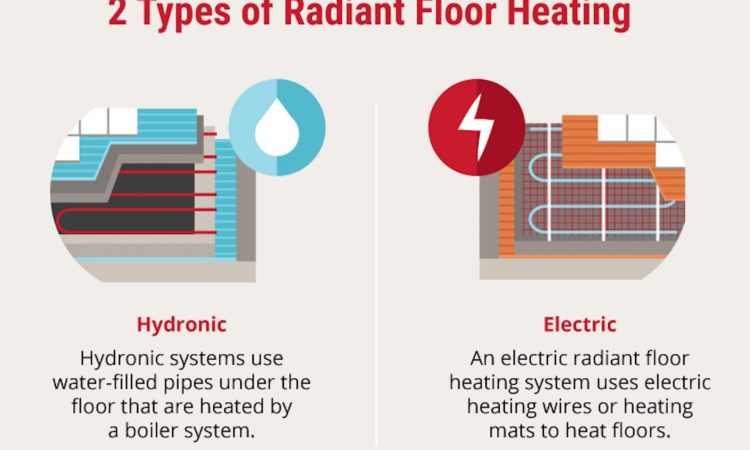So, you’re thinking about underfloor heating. That lovely, toasty warmth that radiates from the floor up. It’s a game-changer for home comfort, honestly. But here’s the deal: the real magic—and the biggest headache—isn’t just the system itself. It’s the compatibility.
Will it work with your stunning new porcelain tiles? What about that beautiful engineered wood you’ve had your eye on? And your heat source—are you tied to a gas boiler, or can you pair it with a modern heat pump? Let’s dive in and untangle it all.
It All Starts with the System: Wet vs. Dry
First things first. You have two main paths: wet systems and electric systems. Understanding this choice is the foundation for everything else.
Wet Systems (Hydronic): The Whole-House Powerhouse
Imagine a network of tiny pipes snaking under your floor, circulating warm water. That’s a wet system. It’s like giving your home its own circulatory system. These are fantastic for heating large areas or entire homes efficiently.
Key Compatibility Considerations:
- Floor Height: This is a big one. Wet systems need more space. You’re looking at a significant build-up, often 50mm or more, which can affect door heights and staircases.
- Heat Source: Incredibly versatile. They work beautifully with gas or oil boilers, but—and this is key—they are the perfect partner for heat pumps. Heat pumps work best at lower flow temperatures, which is exactly how underfloor heating is designed to operate.
- Best For: New builds, major renovations, and whole-property heating.
Electric Systems: The Agile Problem-Solver
Electric systems use thin heating cables or mats installed directly beneath the floor finish. Think of them as a giant, invisible electric blanket. Their superpower is their slim profile.
Key Compatibility Considerations:
- Floor Height: Minimal intrusion. Often just a few millimeters. This makes them ideal for retrofits where raising the floor level isn’t an option.
- Heat Source: They run on electricity, obviously. This makes them simple to install but potentially more expensive to run for whole-house heating. Perfect for supplemental warmth in bathrooms or kitchens.
- Best For: Single-room retrofits, renovations, and spaces above ground floors.
The Floor Finish: The Make-or-Break Partnership
This is where your dream floor meets the heating reality. The material on top is not just a decoration; it’s a key part of the heating system. It needs to be a good conductor of heat.
Here’s a quick compatibility table to visualize it:
| Flooring Type | Compatibility | Key Things to Know |
| Tile & Stone | Excellent | The gold standard. They conduct and store heat brilliantly. Honestly, you can’t go wrong. |
| Engineered Wood | Very Good | Stable and layered to resist warping. Must be specifically rated for underfloor heating. Solid wood? Usually a no-go. |
| Laminate & Vinyl (LVT/LVP) | Good | Many modern options are compatible. Check the manufacturer’s max temperature rating—it’s non-negotiable. |
| Carpet | Risky | It’s an insulator. If you must, use a very thin carpet and underlay with a low tog value (<2.5). The system will have to work much harder. |
A little pro tip: always, and I mean always, follow the flooring manufacturer’s guidelines, not just the heating system’s. They know their product best.
The Heat Source: The Heart of the Operation
Compatibility doesn’t stop at the floor. What’s powering the whole show? This is where things get really innovative.
The Heat Pump Harmony
If you’re future-proofing your home, this is the dream team. Heat pumps are most efficient when they provide a lower, constant heat over a long period. Underfloor heating is designed for exactly that. It’s a match made in HVAC heaven. The large surface area of the floor means it doesn’t need scalding water to warm a room, just a gentle, consistent warmth.
Boilers and Solar
Traditional boilers work great with wet UFH systems, often via a mixing valve to get the temperature just right. But for a truly modern setup, consider pairing a wet system with solar thermal panels. You’re essentially heating your floors with sunshine. How cool is that?
Smart Controls: The Brainy Upgrade
Modern underfloor heating isn’t just about warmth; it’s about intelligence. The latest systems offer zoning and smart controls that learn your habits. Imagine your kitchen warming up before your morning coffee, and the living room cozying up before you get home from work.
Compatibility here is about the system’s brain talking to your home’s brain. Look for systems that integrate with smart home ecosystems like Google Home or Apple HomeKit. It’s no longer a luxury; it’s what makes the system truly effortless.
Navigating a Renovation? Here’s Your Blueprint.
Retrofitting underfloor heating can feel daunting, but innovative low-profile systems have changed the game.
- Electric Mats are your best friend for single rooms. They’re like a peel-and-stick heating solution.
- Low-Profile Wet Systems now exist that fit into just 15mm of depth. They’re a bit of engineering genius, honestly, allowing for wet system benefits without the major construction.
- Always, and I can’t stress this enough, do a thermal check. Insulating the floor below your system is crucial. Otherwise, you’re just heating the ground beneath your house.
The Final Warm Thought
Choosing underfloor heating is a decision for long-term comfort. Its success hinges on a quiet, hidden dance of compatibility—between the system, the floor, the heat source, and the controls. It’s about creating a seamless, integrated environment. When all the pieces align, the technology itself disappears. All you’re left with is the feeling of a perfectly warm floor on a cold morning. And really, that’s the whole point.

